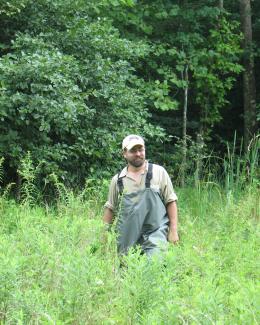Abstract
Microbial community structure and metabolism in contaminated ecosystems are potentially controlled not only by the different populations within the community, but a myriad of dynamic physicochemical parameters as well. The goal of the current work was to determine the impact of organic acid enrichment, in this case lactate, on the succession of the native microbial community from a contaminated groundwater aquifer. Triplicate anaerobic, continuous-flow glass reactors were inoculated with Hanford 100-H groundwater and incubated for 95 days to obtain a stable, enriched community. The microbial community experienced a shift in the population dynamics over time to eventually form a community with far less diversity than the original. The final community was dominated by Pelosinus spp. and to a lesser degree, Acetobacterium spp. with small amounts of other bacteria and archaea including methanogens. The resultant diversity was far decreased from 63 genera within 12 phyla to 11 bacterial genera (from three phyla) and 2 archaeal genera (from one phylum). Isolation efforts were successful in attaining new species of Pelosinus and known members of Methanosarcina barkerii along with several sulfate- and Fe(III)- reducing consortia members. The continuous-flow reactors allowed for testing physiochemical factors with microbial community dynamics on a smaller, replicable, scale while also facilitating the isolation of several previously uncultured community members. These lab-scale simulations will presumably allow for a deeper understanding of the community metabolism with specific carbon amendments that can inform future in situ efforts.



